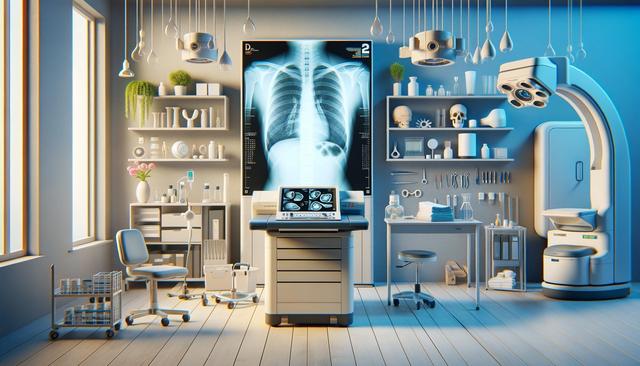
Facilities Offering Diagnostic Imaging Services
The Role of X-ray Technicians in Diagnostic Imaging
X-ray technicians, also known as radiologic technologists, are essential members of the healthcare system who operate medical imaging equipment to assist in diagnosing and treating patients. Within facilities offering diagnostic imaging services, these professionals use their expertise to produce clear and accurate images that help physicians make informed decisions. Their responsibilities extend beyond simply operating machines; they also prepare patients for procedures, ensure safety protocols are followed, and maintain imaging equipment. As the demand for diagnostic imaging grows, especially in outpatient clinics and specialized healthcare centers, the need for skilled X-ray technicians continues to rise.
To meet evolving healthcare demands, many aspiring professionals are turning to Radiology Online Degree and Radiology Online Courses to gain the necessary qualifications. These flexible learning options make it possible for students to balance education with work or personal responsibilities, especially for those looking to transition into the healthcare field without attending traditional in-person programs.
Education and Training for X-ray Technicians
Becoming an X-ray technician typically requires formal education through accredited programs that cover anatomy, patient care, radiation physics, and image evaluation. While many programs are campus-based, online alternatives are becoming increasingly popular due to their accessibility and convenience. A growing number of institutions now offer an Online Radiology Degree, allowing students to complete theoretical coursework remotely, while arranging clinical experiences in approved local facilities.
Key components of radiology training include:
- Understanding radiation protection and safety practices
- Learning how to position patients for optimal imaging results
- Operating a variety of diagnostic imaging equipment
- Analyzing images for quality and clarity
After completing their education, graduates must often pass a certification exam to become licensed or registered, depending on the requirements of their state or country. Continuing education is also essential to stay current with technological advancements and evolving healthcare practices.
Work Environments and Daily Responsibilities
X-ray technicians work in a variety of healthcare settings including hospitals, outpatient clinics, urgent care centers, and specialized imaging facilities. Their daily routines involve interacting with patients, preparing exam rooms, operating imaging machines such as X-ray, CT, or MRI scanners, and working closely with radiologists and other healthcare providers to ensure high-quality diagnostic results.
Typical tasks include:
- Reviewing patient histories and physician instructions
- Positioning patients and shielding them from unnecessary radiation
- Capturing diagnostic images and verifying their accuracy
- Maintaining detailed patient records and imaging logs
Given the physical nature of the job, technicians often spend long hours on their feet and may need to assist in lifting or moving patients. Strong communication and interpersonal skills are also important, as technicians must explain procedures and provide reassurance to anxious patients.
Technology and Equipment Use in Radiology
The field of diagnostic imaging has evolved significantly with the development of advanced imaging technologies. X-ray technicians must stay familiar with various types of equipment, some of which require specialized training. Modern imaging devices include digital radiography systems, fluoroscopy units, and mobile X-ray machines, each serving distinct diagnostic purposes within healthcare facilities.
To effectively operate such technology, technicians must:
- Understand the technical settings of each imaging system
- Calibrate and maintain equipment for optimal performance
- Ensure compliance with health and safety regulations
- Adapt to software updates and digital imaging platforms
Online education programs, including Radiology Online Courses, play a vital role in keeping current and future technicians updated on these innovations. Many of these courses include virtual simulations and interactive modules that mimic real-life scenarios, providing a robust learning experience even at a distance.
Career Prospects and Advancement Opportunities
The demand for diagnostic imaging services is expected to grow due to an aging population and increased access to healthcare. This trend opens up numerous opportunities for certified X-ray technicians, especially those who show initiative in continuing education and specialization. Pursuing an Online Radiology Degree can also serve as a stepping stone to more advanced roles, such as MRI technologist, CT technologist, or even radiologist assistant positions with further study.
Career advancement may involve:
- Gaining additional certifications in specialized imaging modalities
- Taking leadership roles in imaging departments
- Transitioning into education or training positions
- Exploring research opportunities in radiologic science
Overall, X-ray technicians with a strong foundation in both practical skills and theoretical knowledge—often gained through Radiology Online Courses—are well-positioned for long-term success in the field.
Conclusion: A Promising Path in Healthcare
For individuals interested in combining technology with patient care, a career as an X-ray technician offers meaningful work and stable prospects. With the support of flexible educational paths such as Radiology Online Degree programs, it’s now more accessible than ever to enter this dynamic field. Facilities offering diagnostic imaging services rely on competent technicians to deliver timely and accurate results, making their role indispensable within the healthcare system. Whether you’re just starting your journey or looking to advance your skills, online learning options provide a valuable foundation for a rewarding career in radiologic technology.


